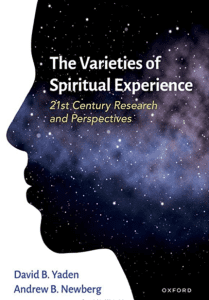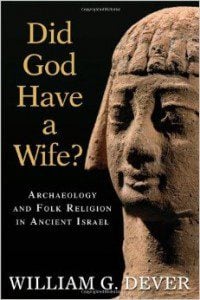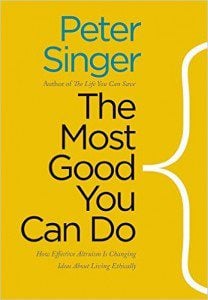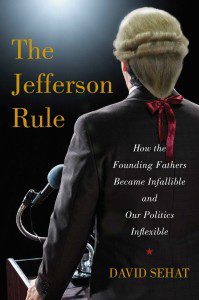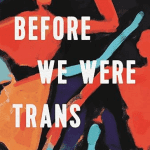On August 13, 1971, the cover of LIFE Magazine featured an image of two women standing side-by-side. On the right, an classical painted image of a tall naked woman stands head-and-shoulders above a modern woman, who is fully dressed. The figure on the right is clearly the biblical figure of Eve, as she is covered only by a strategically-placed fig leaf and is holding an apple. The modern feminist beside her holds a sign that says, “EVE WAS FRAMED.” Eve was framed. But in this post, I would like to explore an additional angle on this ancient story. Not only was Eve framed, but the serpent was right.
The biblical creation myth at the beginning of the book of Genesis tells us that in the middle of the primordial Garden of Eden, God planted “the tree of the knowledge of good and evil” (2:9). And God commanded Adam, the archetypal first man, “You may freely eat of every tree of the garden; but of the tree of the knowledge of good and evil you shall not eat, for in the day that you eat of it you shall die” (2:16-17). We are told as well that God made woman, and “the man and his wife were both naked, and were not ashamed.” (2:25).
The twist comes when the serpent enters the picture: “the serpent was more crafty than any of the wild animals God had made” (3:1). The serpent tells the woman that she should eat the forbidden fruit: “You will not die; for God knows that when you eat of it your eyes will be opened, and you will be like God, knowing good and evil” (3:4-5):
So when the woman saw that the tree was good for food, and that it was a delight to the eyes, and that the tree was to be desired to make one wise, she took of its fruit and ate; and she also gave some to her husband, who was with her, and he ate. Then the eyes of both were opened, and they knew that they were naked; and they sewed fig leaves together and made loincloths for themselves. (3:6-7)
Next comes the part about God investigating this disobedience, Adam’s cowardly scapegoating of Eve, and God meting out various curses to punish Adam, Eve, and the serpent. But here’s another important part: as God prepares to banish Adam and Eve from the Garden, God says to the other members of the divine court (such as the angels), “The man has now become like one of us…” (3:22).
That’s the most familiar version of the Adam and Eve story. But here’s another version from a book written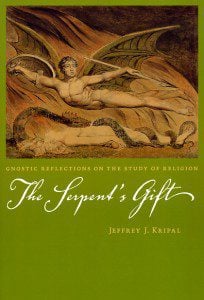 in the 2nd or 3rd century called The Testimony of Truth from the non-canonical Christian writings (the writings excluded from the official “orthodox” list of books). Regarding the orthodox version of the Adam and Eve story, The Testimony of Truth says,
in the 2nd or 3rd century called The Testimony of Truth from the non-canonical Christian writings (the writings excluded from the official “orthodox” list of books). Regarding the orthodox version of the Adam and Eve story, The Testimony of Truth says,
What sort is this God? First [God] envied Adam that he should eat from the tree of knowledge…. And afterward [God] said, Let us cast him out of this place, lest he eat of the tree of life and live for ever.” Surely [God] has shown himself to be a malicious envier. (Kripal 1)
Similar questions have gotten many a precocious child into trouble over the years in Sunday School classes:
- How can God justify punishing Adam and Eve for eating from the tree of the knowledge of good and evil, when prior to eating from the tree, then didn’t have any knowledge of good and evil?!
- And did God lie when God said, “but of the tree of the knowledge of good and evil you shall not eat, for in the day that you eat of it you shall die.” Even according to the canonical Bible, the serpent was right on that count. As the serpent hissed into Eve’s ear: “You will not die; for God knows that when you eat of it your eyes will be opened, and you will be like God, knowing good and evil.”
One key to understanding the dynamics at play in this ancient myth is the many layers of meaning around the word knowledge. You may have heard the phrase, “he knew her in the biblical sense,” meaning “carnal knowledge,” embodied knowledge. Notice that immediately after Adam and Eve are banished from the Garden for eating from the tree of the knowledge of good and evil, we read in the very next verse that, “the man knew his wife Eve, and she conceived and bore Cain.” The same Hebrew word for knowledge (yada) is used both for the tree of the knowledge of good and evil as well as for Adam knowing his wife Eve in such a way that a baby was born nine months later.
This connection is intentional between being mature enough to comprehend moral complexity (good and evil) and being mature enough to be self-aware of adult sexuality. The capability of understanding the messiness, complexity, and gray-areas associated with adult moral reasoning emerges around the same time as adolescence and puberty. So in the trajectory of human psycho-sexual development, we can see the root of that correlation between eating the fruit of the tree of the knowledge of good and evil and one’s body beginning to come into fruition (if you will) in a way that brings a very different kind of knowledge — a carnal knowledge sometimes called a “loss of innocence.” And once you “eat of such fruit,” childhood innocence is lost — just as Adam and Eve could never go back to their previous naked and carefree life in the Garden.
Similarly, consider that God is depicted in this story very much like a stereotype of the parent of a young child, who is too young to know the difference between good and evil. Adam and Eve are told not to eat the forbidden fruit “Because I told you so!” And God — as many parents have — tells an exaggerated “white lie” (“if you eat of the fruit you’ll die!”) to try to keep them away from adult matters they are too young to understand.
 Similarly, you may have heard of Meg Wolitzer’s 2014 novel The Interestings, which has been getting a lot of buzz. Her earlier 2005 novel The Position, which was also well-reviewed, is about the children of parents, who (before they had children) published a book together about their sex lives. Wolitzer’s novel tells the story of this couple’s four children, ages 6 to 15, stumbling upon this book in 1975 and how it differently effects each of them for the rest of their lives — given the different ages at which they are in 1975 when they encounter the “knowledge” in this age-inappropriate book, which we could think of as a contemporary version of the “forbidden fruit.”
Similarly, you may have heard of Meg Wolitzer’s 2014 novel The Interestings, which has been getting a lot of buzz. Her earlier 2005 novel The Position, which was also well-reviewed, is about the children of parents, who (before they had children) published a book together about their sex lives. Wolitzer’s novel tells the story of this couple’s four children, ages 6 to 15, stumbling upon this book in 1975 and how it differently effects each of them for the rest of their lives — given the different ages at which they are in 1975 when they encounter the “knowledge” in this age-inappropriate book, which we could think of as a contemporary version of the “forbidden fruit.”
Conversely, another riveting (and disturbing) contemporary parallel is the 2009 Greek film Dogtooth about parents, who keep their children cloistered inside their walled property, completely cut off from the “knowledge” of the outside world. This film can be read as a tale of what happens if you stay in the Garden too long and the forbidden fruit is not eaten, such that adult knowledge about morality and sexuality is repressed, forcing it to come out in twisted ways.
Keep in mind what Eve sees for herself after the snake hisses in her ear that if you eat the forbidden fruit,  “You will not die…[rather,] your eyes will be opened, and you will be like God” — meaning like an adult. Adults, after all, can appear quite godlike sometimes to young children. And like an innocent child, Eve had probably never previously dared to go anywhere near the forbidden tree — not for any sophisticated adult reason, but because her “God-Parent” said so. But with the serpent’s encouragement, she boldly crosses the boundary put in place by an authority figure, and the Bible itself tells us that she
“You will not die…[rather,] your eyes will be opened, and you will be like God” — meaning like an adult. Adults, after all, can appear quite godlike sometimes to young children. And like an innocent child, Eve had probably never previously dared to go anywhere near the forbidden tree — not for any sophisticated adult reason, but because her “God-Parent” said so. But with the serpent’s encouragement, she boldly crosses the boundary put in place by an authority figure, and the Bible itself tells us that she
saw that the tree was good for food, and that it was a delight to the eyes, and that the tree was to be desired to make one wise, she took of its fruit and ate; and she also gave some to her husband, who was with her, and he ate. Then the eyes of both were opened.
One way of paraphrasing the barely hidden subtext of the Garden of Eden story is that, “Breaking the commandments of orthodox religion, the teenagers experimented with drugs and sex, and there were consequences.” Another slightly more hidden meaning is buried in that line that Eve saw, “the tree was desired to make one wise” — that is, to gain knowledge beyond what one’s childhood community permits, which could include paradigm-shifting scientific knowledge or transgressive moral knowledge that challenges the limitations of social norms. Think of our recent culture wars over evolution, Civil Rights, or same-sex marriage.
Remember also that the non-canonical, Gnostic text The Testimony of Truth criticized God as a “malicious envier” for punishing Adam and Eve for eating from the tree of knowledge — which is basically criticizing God (as depicted in the story) for playing the role of every controlling authority figure who has unsuccessfully tried to repress adolescent rebellion in countless teenage film, dramas, and books.
The word Gnostic comes from the Greek word for “to know,” and has a silent “g” just as our English word “know” has a silent “k.” Gnostic (“Knower”) Christians were fascinated with secret, spiritual readings of biblical texts. And their attraction to secret, mystical realms of the Spirit (ruled by the One True God) was so extreme that they thought the material world was created by an evil lesser god called the “demiurge.” And as you can see from The Testimony of Truth, they read the beginning of Genesis very differently than orthodox Christians. Gnostics saw themselves as an elite group who was “in the know” that the “God” in the Genesis story was really a lesser, petty God who wished to prevent humans from growing up, and becoming like the true God — able to decide for themselves what is good or evil, right or wrong for themselves. Gnostic Christians saw the snake as the heroic martyr of the story, who risked everything to reveal the secret of humanity’s potential for growing up.
As the poet William Blake (1757-1827) said more than two centuries ago: “The Bible must be shaken upside down before it will yield all its secrets. The priests have censored and clipped and mangled: they give us a celibate Jesus born of a virgin without the slightest ‘stain’ of sexual contact, which is blasphemes nonsense (29).” And by demonizing the snake, orthodox Christians set themselves on a trajectory that too often rejected scientific knowledge and stigmatized carnal knowledge.
As a child, I was told that the Adam and Eve story is about a “fall” from an original, perfect state of grace that is now forever lost to the past. But the ancient Gnostics saw that the snake was hissing at us too: warning us not to long for some allegedly perfect past (that we now see never existed and was merely the limited knowledge of childhood innocence), and encouraging us to transgress the false limitations of childhood and move toward the future: toward growing up, toward being religious in a way that welcomes and integrates adult knowledge and adult sexuality as normal, natural, and healthy parts of life (Kripal 15).
Along these lines, in a 1784 essay, the philosopher Immanuel Kant said that the motto of the Enlightenment — that time of challenge established norms through the power of human reason (“human knowledge”) — was “Dare to Know!” And through the lens of the Genesis story, we can hear that Enlightenment motto as another form of the serpent’s hiss: “Take and eat of what you know to be true.”
Next week, I have a post planned reflecting on a recent study I’ve been leading on Tuesday evenings in the congregation I serve on a book by Jeffrey Kripal, the chair of the religion department at Rice University, on Comparing Religions. (For this post, I’ve been drawing from Kripal’s earlier book The Serpent’s Gift: Gnostic Reflections on the Study of Religion.) For Kripal, there is a radical shift that happens when one moves from existing solely within the framework of one religious worldview to a framework of comparing the world’s religions in light of all that we know about human psychology, sociology, history, sexuality, and more. But Kripal — just like the double-meaning of knowledge in Genesis is not only interested in applying post-Enlightenment, rational, scientific knowledge to religion, but also in exploring the equivalent of the somatic, carnal, embodied part of religious knowledge. Just as Eve discovered that the fruit was good for eating when she tasted it for herself, Kripal is interested in the ways that firsthand religious experiences with the holy and the sacred can change us in profound, full-bodied ways such that we can never see ourselves and the world in the same way again. In other words, don’t just read about Buddhism, meditate. Don’t just read about the Hindu tradition, try yoga. Don’t just read about Judaism and Christianity, feed the hungry, visit the sick, clothe the naked. Don’t just write a dissertation about apples, take of the fruit and eat!
Back in March, I post about “Religious Mystic & Rational Humanist: The Mystical Humanism of Jeffrey Kripal,” and I’d love to repeat everything I said in there as well as everything I said about Feuerbach at the end of my post from February on “Atheism for Lent.” But I will instead link to them. And I will plan to provide some further clarity next week in a post about the conclusions Kripal reaches in his study of what happens when we engage in the act of comparing religions in light of twenty-first century knowledge and our own firsthand experience.
For now, I’ll leave you with these words from Kripal on the fruit that he hopes is being born out of his work at the intersection of academic rigor and mystical experience. He hopes that
We might learn to love the wise snake, listen to his many hissing whispers, and realize finally that we are not cursed to die. We have not sinned. We have not fallen. We have sex and reproduce because we die. [We are mortal and want to leave a legacy.] We do not die because we have sex and reproduce. We have only grown up.
The Rev. Dr. Carl Gregg is a trained spiritual director, a D.Min. graduate of San Francisco Theological Seminary, and the minister of the Unitarian Universalist Congregation of Frederick, Maryland. Follow him on Facebook (facebook.com/carlgregg) and Twitter (@carlgregg).
Learn more about Unitarian Universalism:
http://www.uua.org/beliefs/principles





